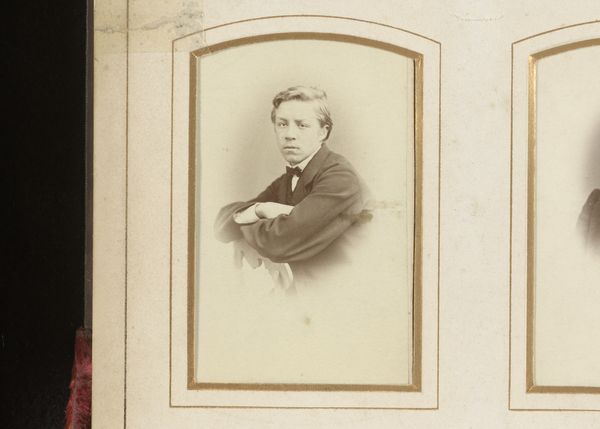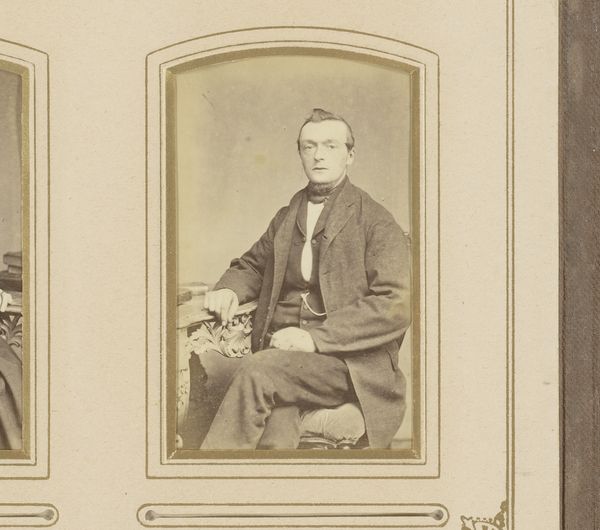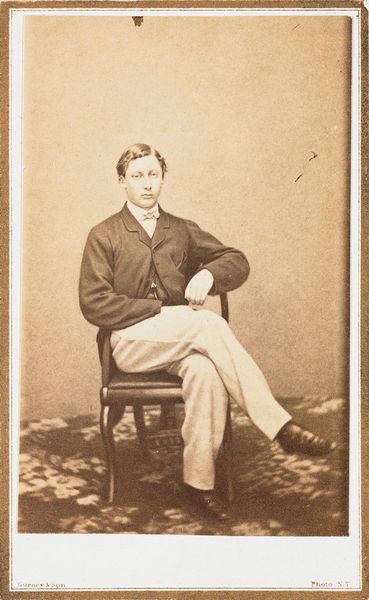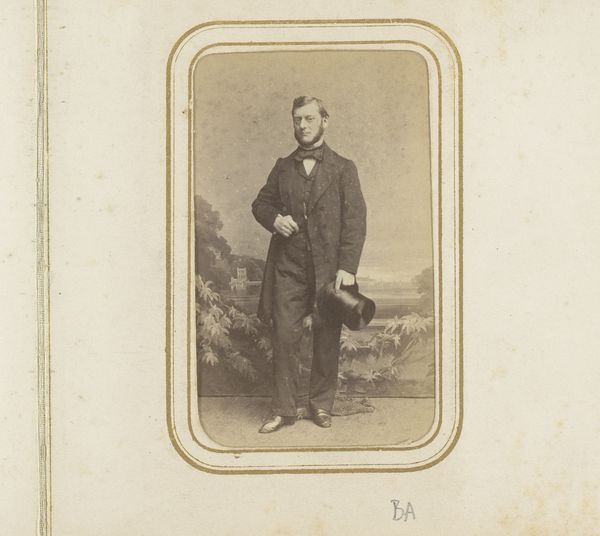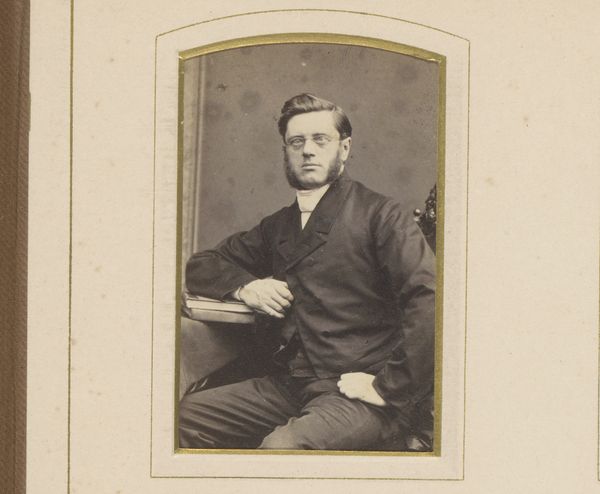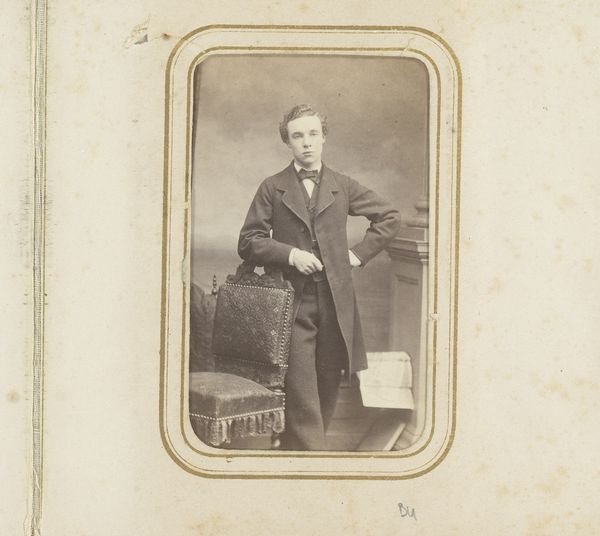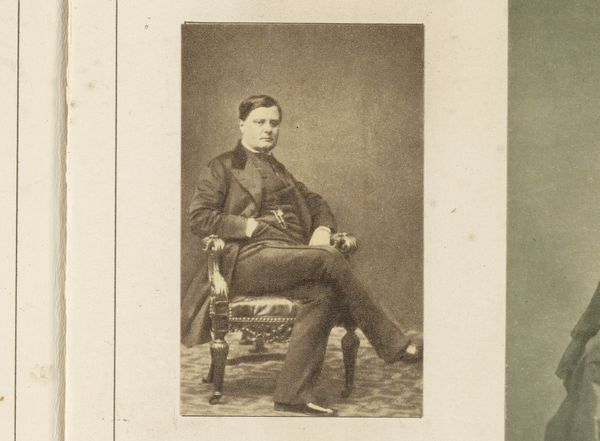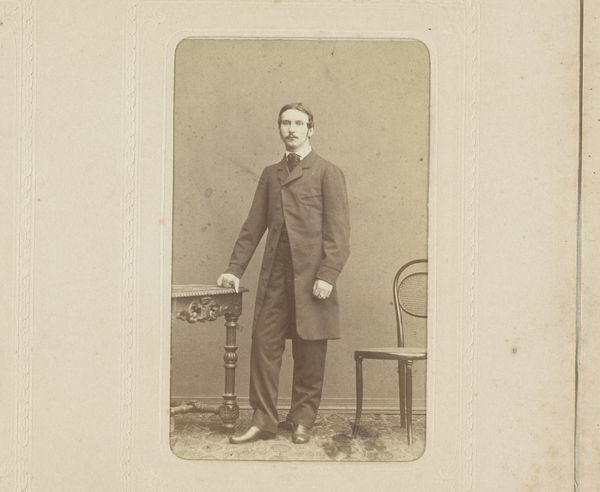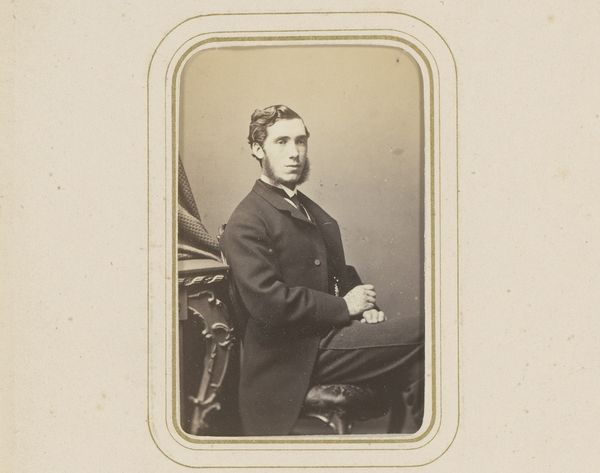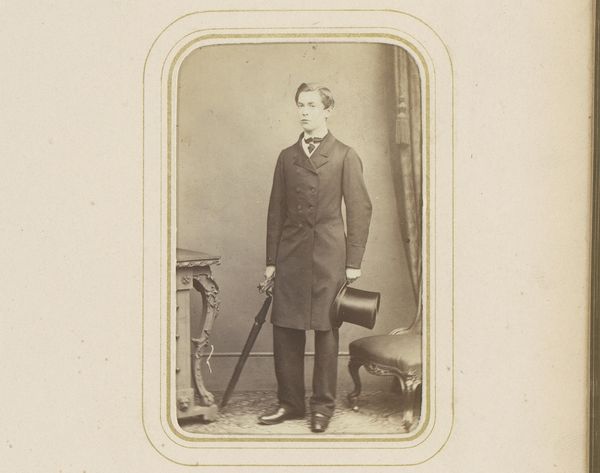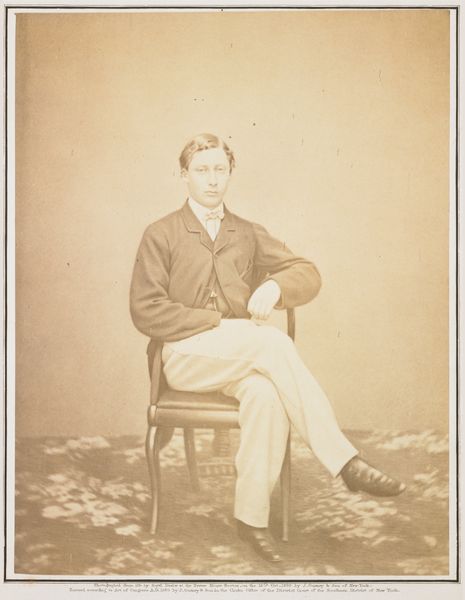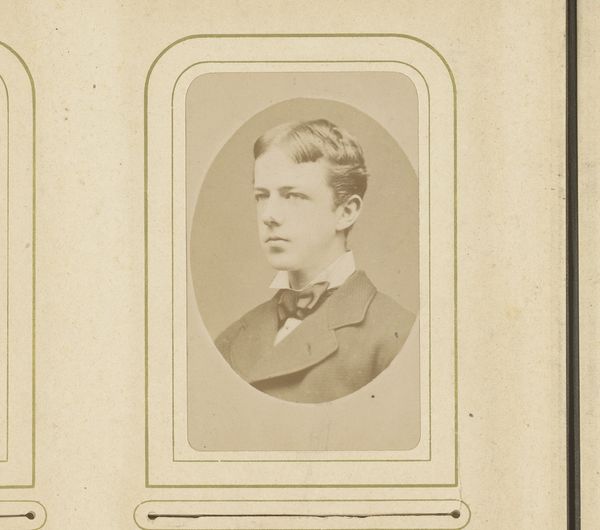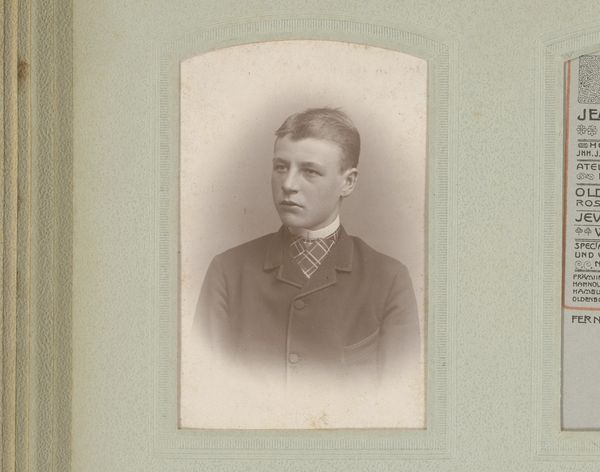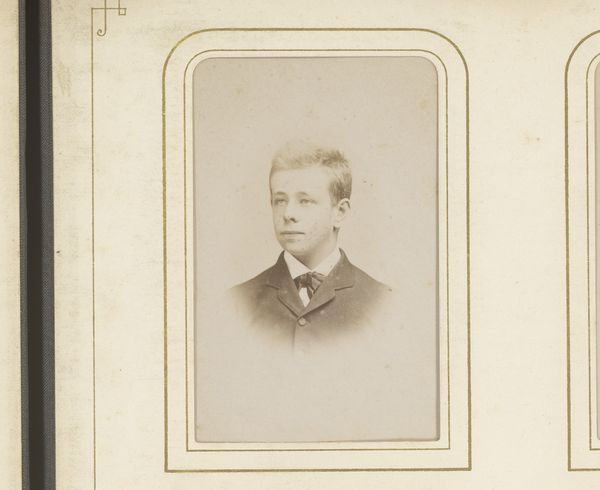
Dimensions: height 84 mm, width 51 mm
Copyright: Rijks Museum: Open Domain
Editor: So, here we have "Portret van Alex Grothe," possibly from 1866, a gelatin silver print photograph. What strikes me immediately is how staged it feels. How do you interpret this work? Curator: For me, it’s crucial to understand the material and social conditions that enabled this image. Consider the chemistry of the gelatin silver print itself – a complex industrial process, not some alchemical mystery. Someone had to manufacture the chemicals, coat the paper, and develop the print. Editor: That makes sense, the final image relies on the work behind the scenes, like how it's preserved here. Curator: Exactly. Think about the sitter, Alex Grothe. His pose and clothing tell us about access and consumption, the textile industry producing his garments and access to tailoring for bespoke details like we see in the buttons of his jacket. Then the very act of commissioning a portrait – was this for personal memento or societal positioning? These details inform and constitute the reading. Editor: So, you're saying that photography in this period becomes almost a performance, both in front of and behind the camera? The social context is just as critical to explore. Curator: Precisely. We need to examine the relationship between the technology of image-making and the social structures that made such images possible. It forces us to confront what kind of labor went into creating, not just "art," but visual culture itself. Editor: I hadn't considered the wider production chains and societal values that play a role. Thanks, it is helpful to analyze art through those lenses! Curator: Indeed, looking beyond the image is sometimes more important. It lets us think of it as more than a decorative luxury.
Comments
No comments
Be the first to comment and join the conversation on the ultimate creative platform.
